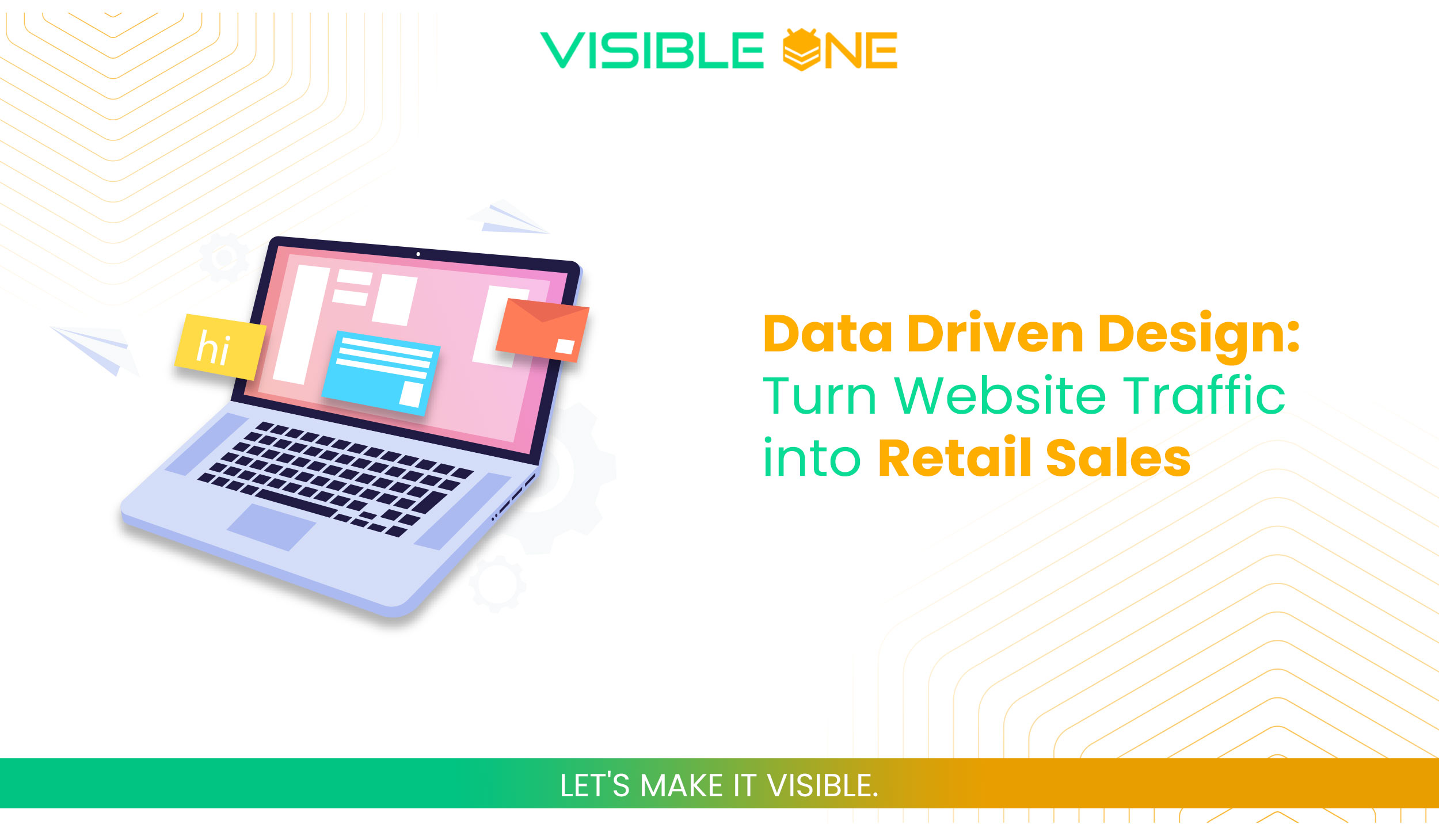Data‑Driven Design: Turn Website Traffic into Retail Sales
Imagine this: Websites using A/B-tested calls-to-action (CTAs) can convert up to 35% more visitors into paying customers. That’s not a fluke; it’s the power of data-driven design in action. In the fiercely competitive retail landscape, simply attracting traffic isn’t enough—you must leverage data insights to transform visits into measurable sales. The connection between website analytics and tangible revenue outcomes has never been clearer, and businesses that grasp this dynamic hold a significant competitive advantage.
What is Data‑Driven Design?
Data-driven design refers to the process of making strategic design decisions based on clear, measurable data from web analytics, user behaviors, and real-time insights. Unlike its cousin, data-informed design, which uses qualitative insights and quantitative data interchangeably, data-driven design places an even greater emphasis on concrete, quantifiable results.
In the context of retail, data-driven design translates directly into improved conversions, more precise inventory management, and finely tuned user experiences. It’s the backbone of websites that continuously iterate their layouts, messaging, and product presentations based on direct evidence of what works, turning casual browsing into real, consistent revenue.
Gather & Interpret the Data
Leveraging data begins with understanding how to collect and interpret it effectively. Tools like Google Analytics provide foundational metrics such as bounce rates, session durations, and click-through rates, offering insights into visitor behaviors at a glance.
To delve deeper into user actions, tools like Hotjar or Crazy Egg offer heatmaps and session recordings, visually displaying precisely where users click, hover, and lose interest. This qualitative data, coupled with direct customer surveys and interviews, can reveal nuanced pain points and opportunities not immediately obvious from raw numbers.
Here’s a quick overview of essential KPIs to focus on:
- Bounce Rate: High bounce rates often signal mismatched expectations or poor UX.
- Time-on-Page: Indicates content engagement and product interest.
- Cart Abandonment Rate: A critical metric highlighting friction points in checkout processes.
- Click-Through Rate (CTR): Measures the effectiveness of CTAs and promotional banners.
Design Strategies to Drive Sales
Optimize Product Page Elements
Every element on your product page can significantly impact conversion rates. Headlines, product images, descriptions, and especially your CTAs must undergo rigorous testing. Small tweaks in color, text, or position—rooted in psychological principles—can lead to substantial improvements in click-through rates.
For example, red-colored CTAs often create urgency, while green ones may instill confidence. Strategic placement, such as placing your primary CTA above the fold, ensures maximum visibility, increasing engagement significantly.
Personalized UX via Segmentation
Using segmentation data—demographic details, purchasing histories, and browsing behaviors—enables tailored user journeys. Retailers employing segmentation see more relevant content delivery, leading to increased conversions and loyalty.
First-time visitors might receive an introductory discount or guided walkthrough, while repeat visitors could benefit from personalized product recommendations and smoother checkout experiences.
Align Online & In‑Store Experiences
Modern retail thrives on seamless integration between online interactions and physical store visits. Data captured from online user behavior can directly inform physical store layouts, optimizing in-store navigation. Conversely, in-store behavior data, like frequently bought items, can be reflected in strategic online placements.
This omnichannel approach encourages deeper customer engagement, creating cohesive experiences that drive repeat business both online and offline.
Predictive Insights for Inventory & Merchandising
Predictive analytics tools like Prophet or LSTM-based models forecast future demand, enabling retailers to proactively adjust inventory levels and merchandising strategies. Using website browsing data, such tools can predict trends weeks in advance, allowing agile inventory adjustments to meet anticipated demand without overstocking or undersupplying.
These proactive adjustments directly boost profitability by minimizing unsold stock and maximizing sales opportunities through timely and relevant merchandising.
Step-by-Step Implementation Guide
Turning your website traffic into retail sales isn’t just theory; here’s a practical roadmap for immediate action:
- Step 1: Audit Your Current Data: Set up comprehensive analytics, heatmaps, and user feedback tools. Identify your baseline metrics.
- Step 2: Prioritize Your Tests: Begin by testing high-impact areas such as CTAs, product imagery, headlines, and overall page layouts. Focus on quick wins first.
- Step 3: Train Teams on Data Interpretation: Equip your teams with the skills to understand analytics dashboards and implement findings into actionable strategies.
- Step 4: Roll Out, Monitor, Refine: Introduce design changes incrementally, continuously monitor performance, and rapidly iterate based on ongoing insights.
Conclusion
Implementing data-driven design isn’t merely about enhancing aesthetics; it’s about strategically transforming visitor insights into profitable actions. Businesses that prioritize data-driven strategies consistently enjoy higher conversion rates, more efficient inventory management, and significantly improved customer experiences.
Begin your journey today by initiating small-scale A/B tests and continuously refining your approach based on measurable outcomes. Stay tuned for future discussions on topics such as “Measuring ROI from UX Changes” and “Omnichannel Data Integration” to further enhance your retail success.

